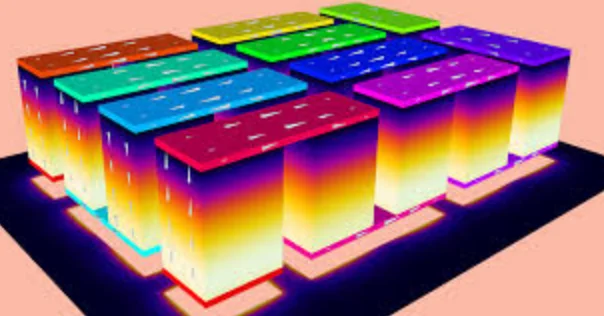A new material holds promise
In a major breakthrough, Bengaluru based that can help in tapping waste heat produced by domestic and industrial appliances, and use it for other useful work. Heat from a laptop, for example, can be used to charge a mobile phone. Or that from a mobile phone can be used to charge a small watch.
They key to utilizing the large amounts of heat produced by industrial processes and power plants is to find an energy conversion process that can convert this heat into more convenient electrical energy, which can then be deployed to drive other machines or processes.
Kanishka Biswas and his team at the Bengaluru-based Jawaharlal Nehru centre for advanced scientific research claim to have found a new material, silver antimony telluride, that can facilitate this energy conversion. Their latest finding, which improves upon their own earlier work in this field, has been reported in the journal science.(Enhanced atomic ordering leads to high thermoelectric performance in AgSbTe2).
Energy conversion is in general not a very efficient process. Only a small fraction of energy that is used is actually productive. The rest of it goes waste, and is often released as heat. For example, when we burn fuel in an automobile engine, only about 30 percent of the total energy content is used to drive the vehicle. Similarly, when coal is burnt to boil water in large turbines of power plants, or even when the atom is split in nuclear reactors, large amounts of energy are wasted in the form of heat.
This waste heat can be tapped and converted into electrical energy, but this process too is highly inefficient. Typically, no more than 15 to 20 percent of the waste heat can be utilized. The underlying physical phenomenon, known as the thermoelectric effect, is simple- and has been known to scientists for more than 200 years.
If two ends of an electrically-conducting material, like a metal, are maintained at different temperatures, current flows from the hot end towards the cold one. This phenomenon makes it possible, for example, to generate an electric current in a metallic attachment that is connected to the exhaust pipe of an automobile engine, or a generator, or any other source of waste heat. The end connected to the heat source would be hotter than the other end, a current would be induced, which can be tapped by connecting the cooler end to a battery or some other device. The problem in facilitating this transfer of energy, however, is the fact that most materials that conduct electricity also happen to be good conductors of heat. That means there would not be any significant temperature difference between the two ends of the material for very long. Traditionally, thermoelectric effect has been demonstrated by using two different metals joined together, and by mechanically maintaining two different temperatures at the ends. But such materials do not offer efficient or economical solutions. The quest has been to find a material that is a good conductor of electricity, but a bad conductor of heat.
Two years ago, Biswas and his colleagues synthesized a compound of silver, copper and tellurium, called silver copper telluride, which showed this property. A crystalline solid, it had free electrons that helped in the conduction of electricity- but its lattices were rather inflexible and vibrated quite slowly, thereby inhibiting the propagation of heat. Before this, Biswas had also been working on lead telluride, another material with this property. In fact, lead is a common ingredient in many materials that show this property. But because lead has very adverse environment impacts, it was important to look for lead-free materials. Silver copper telluride offered lower efficiency than lead telluride in the conversion of heat in to electrical energy, but it was considered an important breakthrough because it was environmentally benign. The continuous search for a better material has now led Biswas and his colleagues to silver antimony telluride, which is more efficient at energy conversion.
To buy our online courses Click Here
There are two factors that facilitate the thermo-electric effect in any material-electrical conductivity has to be high, while heat conductivity must be low. What we had been able to do with silver copper telluride was to keep its heat conductivity at a very low level. But we could not do anything about the electrical conductivity, Biswas said with silver antimony telluride, we have taken another step, rather, quite a big leap. We have devised a concept called atomic ordering. We have doped the material with a dopant that brings in a very high degree of order in its atoms. And we are able to control both the electrical conductivity as well as heat conductivity of the material. We can then optimize the results. In addition, atomic ordering can be applied to a variety of other materials as well, to exploit the benefits of thermoelectric effect. So that is a novelty too, he said.
Read More: Is ‘Global Britain’ inimical to India?
Silver antimony telluride significantly outperforms silver copper telluride. So this is quite exciting right now, he said. The material has been found to have an efficiency of 14 percent, though a prototype device has so far been able to achieve 10 percent efficiency. But that already is ore than any other known material and can turn out to be ex-termly useful in utilizing at least some of the energy that now goes entirely waste.




